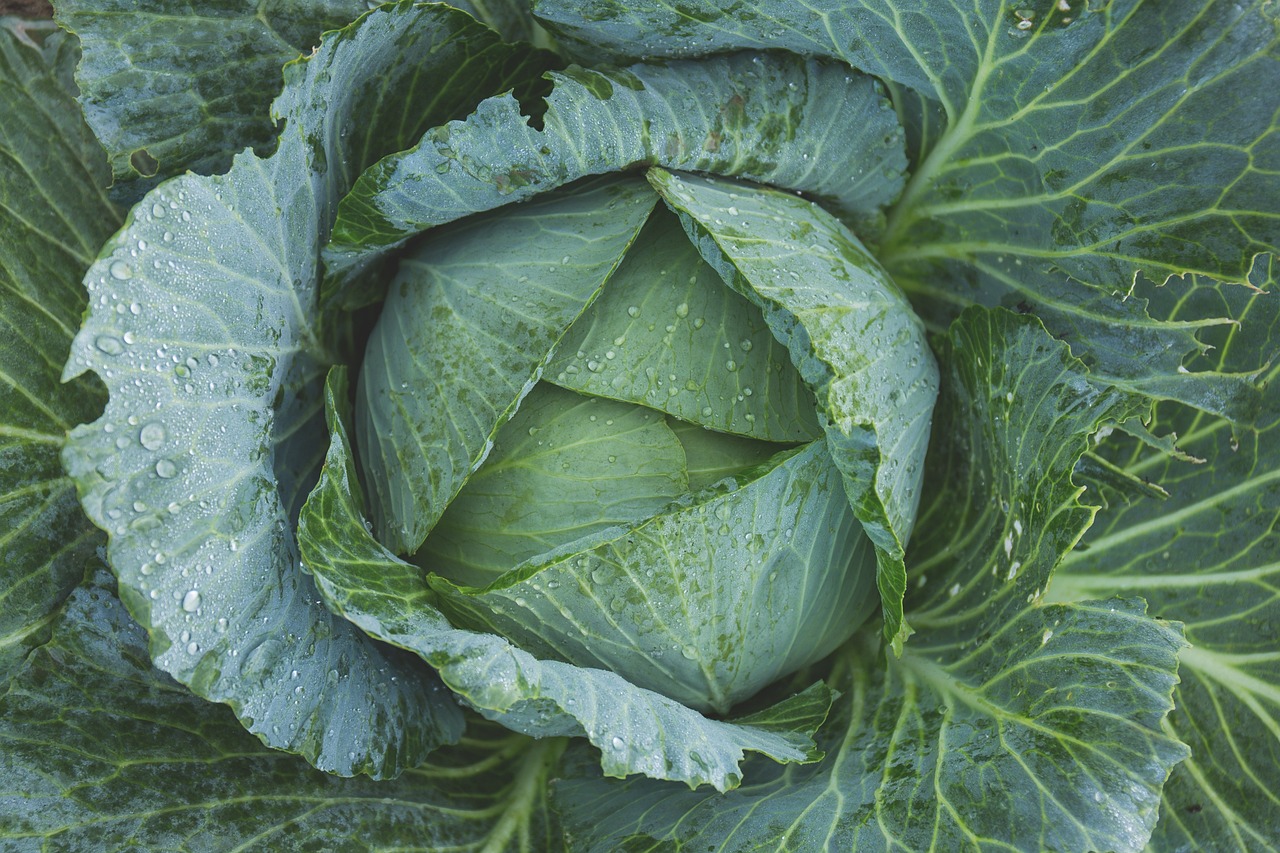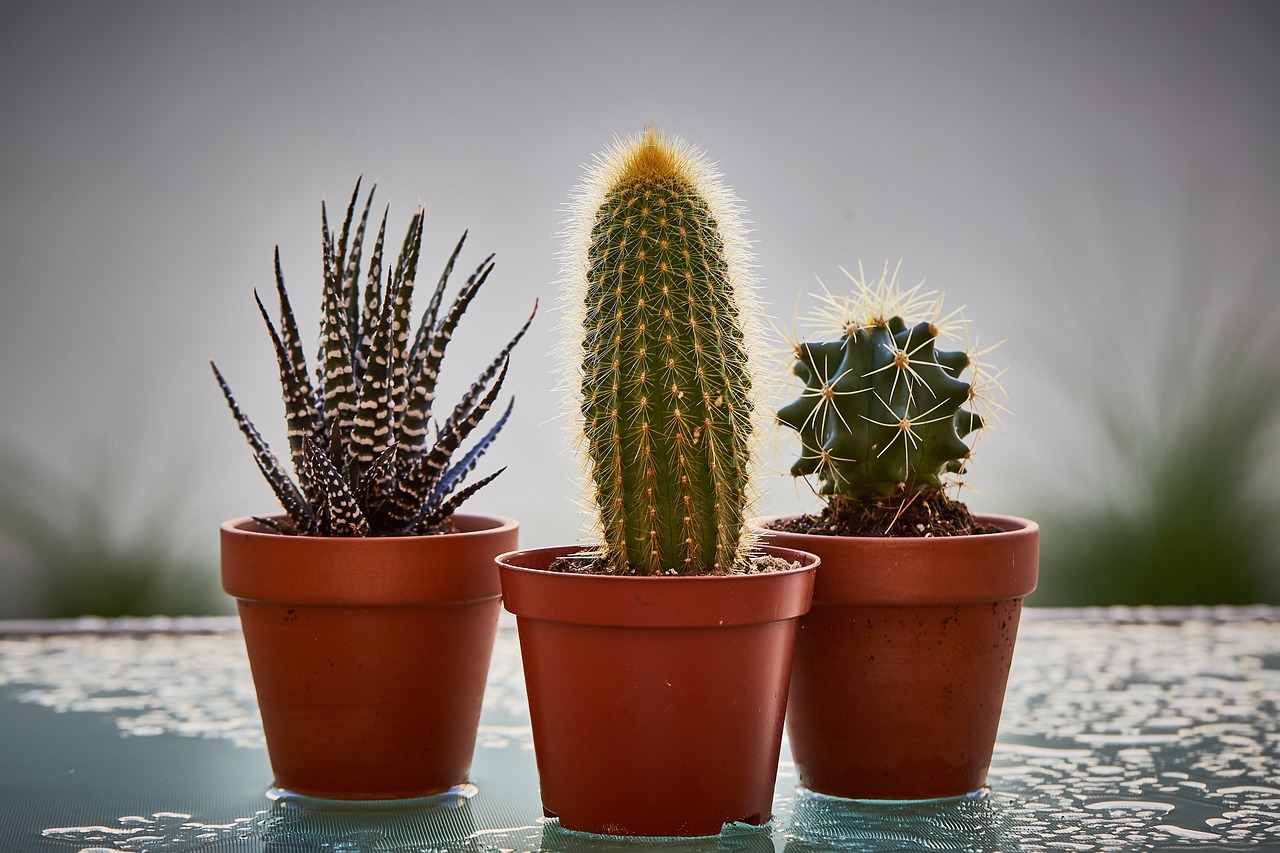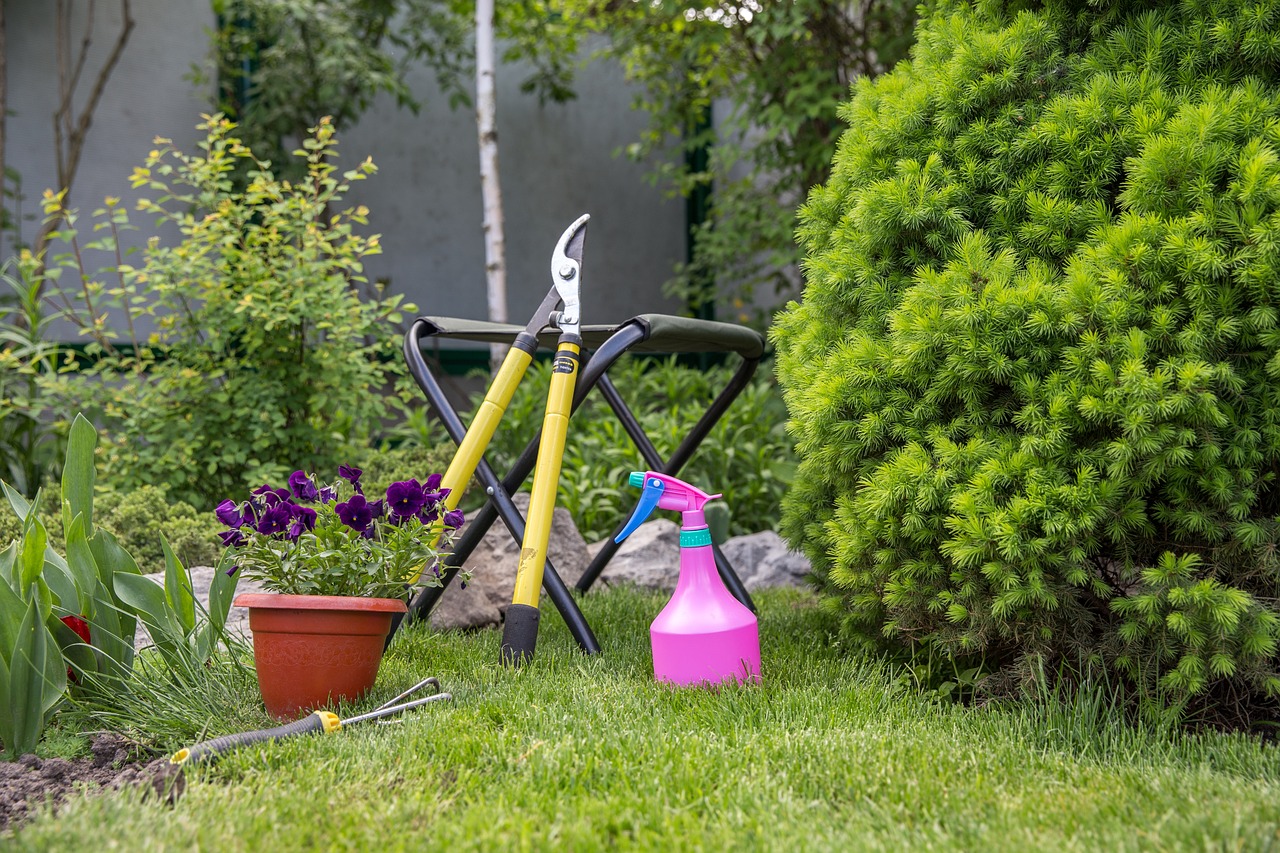How Vertical Gardening Can Help in Urban Agriculture
In today’s rapidly urbanizing world, the concept of food production is evolving at an astonishing pace. As cities expand and green spaces dwindle, the need for innovative agricultural solutions has never been more pressing. Enter vertical gardening—a game-changer in urban agriculture that not only maximizes limited space but also enhances the quality of life in densely populated areas. Imagine transforming a plain wall into a lush, green oasis that not only feeds you but also beautifies your surroundings. This article explores the myriad benefits of vertical gardening, from its impact on food production to its environmental advantages, making it clear that this method is not just a trend but a sustainable solution for urban living.
Vertical gardening is all about growing plants in stacked layers, utilizing vertical spaces that are often overlooked. Think of it as a way to turn your city into a vertical farm, where every inch counts. This innovative approach allows urban dwellers to cultivate a variety of plants—herbs, vegetables, and even flowers—without needing a traditional garden plot. By embracing vertical gardening, we can create a sustainable urban ecosystem that supports both our health and the environment. It’s like giving urban life a breath of fresh air, literally and figuratively!
The advantages of vertical gardening are as numerous as the plants that can thrive in these setups. Here are some key benefits:
- Increased Crop Yield: Vertical gardening can significantly boost the amount of food produced in a given area.
- Improved Air Quality: Plants naturally filter pollutants, making the air cleaner for everyone.
- Enhanced Aesthetics: Vertical gardens transform dull spaces into vibrant, green landscapes.
- Urban Biodiversity: They provide habitats for various species, promoting a diverse ecosystem.
- Mitigating Urban Heat: Vertical gardens can help cool down urban areas, combating the urban heat island effect.
These benefits highlight how vertical gardening is not just about aesthetics; it’s a vital component of a sustainable urban future.
One of the standout features of vertical gardening is its remarkable ability to maximize space. In cities where every square foot is precious, this method allows urban gardeners to grow more food in a smaller footprint. Imagine living in an apartment with a tiny balcony or a small backyard—vertical gardening offers the perfect solution. By utilizing vertical structures, such as walls, fences, or even repurposed pallets, you can create a thriving garden that defies traditional gardening limitations.
Urban areas often face significant challenges regarding land availability for traditional gardening. With rising real estate prices and increasing population density, finding a patch of soil can feel like searching for a needle in a haystack. Vertical gardening provides a practical solution to these limitations, allowing residents to cultivate plants in confined spaces. It’s like finding a hidden treasure in the midst of a bustling city!
Vertical gardens can be seamlessly integrated into existing urban structures. Whether it’s a wall covered in lush greenery or a balcony adorned with cascading plants, the possibilities are endless. This innovative approach not only transforms underutilized spaces into productive gardens but also enhances the overall aesthetic of urban landscapes. It’s a win-win situation—more greenery and less concrete!
Vertical gardening plays a crucial role in fostering a healthier environment. By improving air quality, reducing carbon footprints, and promoting biodiversity, these gardens contribute positively to urban ecosystems. They can help combat climate change by absorbing carbon dioxide and releasing oxygen, making our cities more livable. Just think about it: a vertical garden is like having a mini forest right in your backyard!
When it comes to vertical gardening, there are various systems to choose from, each suited for different environments and plant types. Understanding these systems can help urban gardeners select the best option for their needs.
Hydroponic vertical gardens utilize nutrient-rich water solutions instead of soil. This method allows for faster plant growth and is ideal for urban settings where soil quality may be poor. It’s like giving your plants a nutrient-packed smoothie instead of a regular meal!
Green walls, or living walls, are vertical structures covered with plants. They serve aesthetic purposes, improve insulation, and enhance air quality, making them a popular choice for urban environments. These walls can turn a dull office building into a vibrant ecosystem, providing a natural habitat for birds and insects.
While vertical gardening offers many benefits, it also presents challenges that gardeners must navigate. Maintenance, initial setup costs, and plant selection are among the hurdles that can arise. However, with proper planning and dedication, these challenges can be overcome.
Vertical gardens require regular maintenance, including watering, pruning, and pest control. Urban gardeners must be prepared to invest time and effort to ensure their vertical gardens thrive. Think of it as caring for a pet; it requires love and attention to flourish!
Setting up a vertical garden can involve significant initial costs, especially for hydroponic systems or custom structures. Budgeting and planning are essential for successful vertical gardening projects. It’s important to weigh the long-term benefits against the initial investment to make an informed decision.
Vertical gardening can play a vital role in enhancing urban food security by providing fresh produce directly to city residents. This method supports local food systems and reduces reliance on external food sources. Imagine being able to step outside your apartment and pick fresh tomatoes for dinner!
Engaging communities in vertical gardening initiatives fosters collaboration and education about sustainable practices. Community gardens can empower residents to take control of their food sources and promote healthy eating. It’s about creating a sense of community where everyone can contribute to and benefit from the green revolution.
By growing food locally in urban areas, vertical gardening reduces the distance food must travel from farm to table. This reduction in food miles contributes to lower carbon emissions and fresher produce. It’s a small step that can lead to significant changes in our food systems!
- What types of plants can I grow in a vertical garden? You can grow a variety of plants, including herbs, vegetables, and flowers, depending on the system you choose.
- How much sunlight do vertical gardens need? Most plants require at least 6 hours of sunlight per day, so consider the location of your vertical garden.
- Are vertical gardens expensive to maintain? While there may be initial setup costs, maintenance can be manageable with proper planning and care.
- Can vertical gardens help reduce noise pollution? Yes, plants can absorb sound, making vertical gardens a great addition to noisy urban environments.

The Concept of Vertical Gardening
Vertical gardening is a revolutionary approach to cultivating plants that maximizes space and enhances urban living. Imagine transforming a dull, barren wall into a vibrant tapestry of greenery. This innovative method involves growing plants in vertically stacked layers, allowing urban dwellers to make the most of limited land. With the rapid urbanization of cities, where space is often at a premium, vertical gardening emerges as a beacon of hope for sustainable urban agriculture.
By utilizing vertical structures—think walls, balconies, and rooftops—urban gardeners can create lush gardens that not only beautify their surroundings but also contribute significantly to food production. This method promotes a sustainable lifestyle by encouraging the use of underutilized spaces, making it possible to grow fresh produce right outside your window. It's like having a mini farm in your apartment!
Vertical gardening is not just about aesthetics; it’s a practical solution to the challenges posed by urban living. With the right design and plant selection, anyone can cultivate a thriving garden in an otherwise unused area. The concept is simple yet powerful: by growing upwards rather than outwards, we can increase our agricultural output without requiring additional land. This is particularly important in densely populated areas where traditional gardening methods may not be feasible.
The beauty of vertical gardening lies in its versatility. It can be adapted to various environments and can accommodate a wide range of plants—from herbs and vegetables to flowering plants. Whether you’re a seasoned gardener or a curious beginner, the possibilities are endless. Just think about the joy of plucking fresh basil for your pasta or tomatoes for your salad, all grown right at home!
In conclusion, vertical gardening is more than just a trend; it’s a sustainable solution for urban agriculture that promotes efficient use of space, encourages local food production, and enhances the overall quality of urban life. As cities continue to grow, embracing vertical gardening could be the key to a greener, healthier future.

Benefits of Vertical Gardening
This article explores the benefits of vertical gardening as a sustainable solution for urban agriculture, including its impact on food production, space efficiency, and environmental benefits.
Vertical gardening involves growing plants in vertically stacked layers, maximizing space in urban environments. This innovative method allows for efficient use of limited land and promotes sustainable urban living.
Vertical gardening offers numerous advantages, such as increased crop yield, improved air quality, and enhanced aesthetics. One of the most significant benefits is its ability to transform urban spaces into lush, productive areas. Imagine walking through a city where walls are adorned with vibrant greens and colorful blooms, creating a refreshing contrast to concrete and steel. Not only does this beautify the environment, but it also contributes to urban biodiversity.
Furthermore, vertical gardens can help mitigate the urban heat island effect, where city areas become significantly warmer than their rural surroundings. By incorporating more greenery, these gardens cool the air, making cities more comfortable during hot months. In addition, they can absorb carbon dioxide and release oxygen, improving the overall air quality.
Here are some key benefits of vertical gardening:
- Increased Crop Yield: Vertical gardening allows for more plants to be grown in a smaller footprint, maximizing food production.
- Improved Air Quality: Plants naturally filter pollutants and produce oxygen, contributing to a healthier urban atmosphere.
- Enhanced Aesthetics: Vertical gardens can beautify otherwise dull spaces, making cities more appealing and livable.
- Support for Urban Biodiversity: These gardens provide habitats for various species, promoting ecological health.
- Mitigation of Urban Heat: Green spaces help cool the environment, reducing the need for air conditioning and lowering energy costs.
Additionally, vertical gardening can be a boon for mental health. Studies have shown that being around green spaces can reduce stress and improve mood. Imagine the joy of tending to your own vertical garden while soaking in the beauty of nature, even in the heart of a bustling city!
One of the primary advantages of vertical gardening is its ability to maximize space. By utilizing vertical structures, urban gardeners can grow more food in smaller areas, addressing space constraints in cities. This is particularly important as urban populations continue to rise, leading to increased competition for land. Vertical gardening allows people to cultivate their own food without needing a sprawling yard.
Cities often face challenges with limited land availability for traditional gardening. Vertical gardening provides a practical solution to these limitations, allowing residents to cultivate plants in confined spaces such as balconies, walls, and rooftops. This method not only makes use of otherwise wasted space but also encourages community involvement in gardening practices.
Vertical gardens can be integrated into existing urban structures, transforming underutilized spaces into productive gardens. Whether it’s a living wall in an office building or a balcony garden in an apartment complex, the possibilities are endless. This innovative approach not only enhances urban landscapes but also promotes a sense of community as neighbors come together to share gardening tips and harvests.
Vertical gardening contributes positively to the environment by improving air quality, reducing carbon footprints, and promoting biodiversity. These gardens can play a significant role in creating greener urban spaces. They absorb rainwater, reducing runoff and helping to manage stormwater more effectively. This is crucial in urban areas where impermeable surfaces dominate, leading to flooding and water pollution.
There are various vertical gardening systems available, each suited for different environments and plant types. Understanding these systems can help urban gardeners select the best option for their needs.
Hydroponic vertical gardens utilize nutrient-rich water solutions instead of soil. This method allows for faster plant growth and is ideal for urban settings where soil quality may be poor.
Green walls, or living walls, are vertical structures covered with plants. They serve aesthetic purposes, improve insulation, and enhance air quality, making them a popular choice for urban environments.
While vertical gardening offers many benefits, it also presents challenges, such as maintenance, initial setup costs, and plant selection. Understanding these challenges can help gardeners prepare for successful implementation.
Vertical gardens require regular maintenance, including watering, pruning, and pest control. Urban gardeners must be prepared to invest time and effort to ensure their vertical gardens thrive.
Setting up a vertical garden can involve significant initial costs, especially for hydroponic systems or custom structures. Budgeting and planning are essential for successful vertical gardening projects.
Vertical gardening can play a vital role in enhancing urban food security by providing fresh produce directly to city residents. This method supports local food systems and reduces reliance on external food sources.
Engaging communities in vertical gardening initiatives fosters collaboration and education about sustainable practices. Community gardens can empower residents to take control of their food sources and promote healthy eating.
By growing food locally in urban areas, vertical gardening reduces the distance food must travel from farm to table. This reduction in food miles contributes to lower carbon emissions and fresher produce.
Q: What types of plants can be grown in vertical gardens?
A: A wide variety of plants can thrive in vertical gardens, including herbs, vegetables, and flowering plants. The choice often depends on the specific vertical gardening system used.
Q: How much maintenance do vertical gardens require?
A: Vertical gardens require regular maintenance, including watering, pruning, and pest management. The level of care needed can vary based on the plants and system used.
Q: Are vertical gardens expensive to set up?
A: The initial costs can vary widely depending on the system chosen, but with careful planning and budgeting, vertical gardening can be a cost-effective solution.

Space Efficiency
When it comes to urban gardening, space is often a significant constraint. In bustling cities where every square foot counts, traditional gardening methods can feel like a luxury. However, vertical gardening swoops in like a superhero, offering a solution that maximizes space while allowing urban dwellers to grow their own food. Imagine transforming a small balcony or even a narrow alleyway into a lush garden that not only looks good but also produces fresh vegetables and herbs. Sounds appealing, right?
Vertical gardening is all about using vertical structures to cultivate plants, which means you can grow upwards instead of outwards. This method allows for a staggering increase in crop yield, making it possible to cultivate a variety of plants in a fraction of the space that traditional gardening would require. For instance, a simple wall-mounted planter can yield as much produce as several square feet of traditional garden beds. This is particularly beneficial in urban areas where land is at a premium.
To put it into perspective, consider this: a vertical garden can produce up to four times more food than a conventional garden of the same footprint. This is due to the efficient use of space and the ability to control growing conditions more effectively. By stacking plants vertically, gardeners can take advantage of sunlight and air circulation, which are often limited in crowded urban environments. The result? Healthier plants and higher yields!
Moreover, vertical gardening isn't just about maximizing the amount of food produced; it's also about making the most of every nook and cranny available. Urban gardeners can utilize walls, fences, and even the sides of buildings to create vibrant green spaces. This approach not only beautifies the city but also contributes to a sense of community and well-being. Imagine walking through a neighborhood where every wall is adorned with greenery, creating a peaceful oasis amidst the concrete jungle.
In addition, vertical gardens can be tailored to fit various spaces and aesthetic preferences. Whether you have a small apartment balcony or a spacious rooftop, there are countless designs and systems to choose from. Some popular options include:
- Wall Planters: Simple shelves or pockets attached to a wall where plants can grow.
- Hydroponic Towers: Vertical systems that use nutrient-rich water instead of soil.
- Green Walls: Complete wall systems that support a variety of plants.
Each of these systems offers unique benefits, allowing urban gardeners to select what works best for their individual circumstances. The beauty of vertical gardening lies in its adaptability, making it possible for anyone—regardless of available space—to participate in urban agriculture.
In conclusion, vertical gardening is a revolutionary approach that not only addresses the issue of space constraints in urban areas but also promotes sustainability and community engagement. By growing upwards, urban residents can enjoy the fruits of their labor while contributing to a greener, more vibrant city. So, if you're feeling limited by your living situation, consider looking up—your next garden might be just a wall away!
- What plants are best for vertical gardening?
Plants that are naturally climbers, such as tomatoes, cucumbers, and peas, work well. Herbs like basil and mint are also great choices!
- Can vertical gardens work indoors?
Absolutely! Many indoor vertical gardening systems are designed for low-light conditions, making them perfect for apartments or homes.
- How much maintenance do vertical gardens require?
Maintenance can vary, but regular watering, pruning, and monitoring for pests are essential to keep your garden thriving.

Urban Space Limitations
Urban spaces are often a maze of concrete and steel, leaving little room for traditional gardening. With skyrocketing populations and limited land availability, city dwellers face unique challenges when it comes to cultivating their own food. Imagine living in a bustling metropolis where every square foot counts, and the idea of having a lush garden seems like a distant dream. This is where vertical gardening swoops in like a superhero, offering a viable solution to these urban space limitations.
Many cities are plagued by small yards, balconies that barely fit a chair, and rooftops that often go unused. The reality is that urban gardeners need to think outside the box—or rather, up! Vertical gardening allows individuals to utilize vertical space, transforming walls, fences, and even the sides of buildings into flourishing gardens. By growing plants vertically, urban gardeners can maximize their yield without requiring additional ground space. For instance, a single wall can host an array of herbs, vegetables, and flowers, all thriving in a compact area.
Moreover, vertical gardening can be particularly beneficial in areas where soil quality is poor. Many urban locations suffer from contaminated soil or insufficient space for traditional gardening. Hydroponic systems and green walls can circumvent these issues, allowing plants to thrive without the need for rich, fertile ground. This innovative approach not only enhances food production but also contributes to the overall aesthetics of the urban landscape, making cities greener and more inviting.
In summary, the limitations of urban space don't have to be a barrier to gardening. With the advent of vertical gardening, city residents can reclaim their right to grow food and beautify their surroundings. It’s not just about putting plants on a wall; it's about creating a sustainable, productive environment that can thrive amidst the hustle and bustle of city life. So, why not take advantage of the vertical spaces available? The sky is truly the limit!

Utilizing Walls and Structures
In the bustling world of urban living, where space is often a luxury, vertical gardening presents an ingenious solution by transforming ordinary walls and structures into vibrant green spaces. Imagine your bare balcony or an uninspiring brick wall suddenly bursting with life, color, and the delightful fragrance of herbs and flowers. This is the magic of utilizing vertical gardening in urban environments.
By integrating plants into existing structures, we not only maximize the use of limited space but also create a visually stunning landscape that enhances the overall aesthetic of the area. Vertical gardens can be installed on various surfaces, including:
- Building Facades: These are perfect for creating living walls that not only beautify the building but also provide insulation and reduce energy costs.
- Balconies: Even small balcony spaces can be transformed into lush gardens, offering a personal oasis amidst the urban hustle.
- Rooftops: Rooftop gardens can serve as excellent locations for growing vegetables and herbs while providing a communal space for residents to relax.
- Fences: Utilizing fences for vertical gardening can create a natural privacy screen while yielding fresh produce.
Moreover, the incorporation of vertical gardens into urban infrastructure can lead to significant environmental benefits. For instance, plants on walls can help absorb pollutants, improve air quality, and provide habitat for urban wildlife. They act as natural air filters, trapping dust and other particulates, which is especially important in cities with high levels of pollution.
Not only do these gardens offer practical solutions for urban dwellers, but they also foster a sense of community. When people come together to create and maintain these green spaces, they build connections and promote a shared responsibility for the environment. It’s like creating a small ecosystem right in the heart of the city, where everyone plays a role in nurturing it.
In conclusion, utilizing walls and structures for vertical gardening is more than just a trend; it’s a sustainable practice that brings numerous benefits to urban environments. It’s about making the most of what we have, turning the mundane into the extraordinary, and cultivating a greener future for ourselves and generations to come.
- What types of plants are best for vertical gardening? Choose plants that thrive in vertical spaces, such as herbs, strawberries, and climbing plants like peas or beans.
- How do I maintain a vertical garden? Regular watering, pruning, and monitoring for pests are essential for keeping your vertical garden healthy.
- Can vertical gardens be installed indoors? Absolutely! Many indoor vertical garden systems are available, making it easy to bring greenery into your home.
- What are the cost implications of setting up a vertical garden? Initial costs can vary based on the system chosen, but budgeting for materials and plants is crucial for a successful setup.

Environmental Benefits
Vertical gardening is not just a trendy way to grow your herbs and veggies; it’s a powerful ally in the fight for a healthier planet. By incorporating vertical gardens into urban landscapes, we can significantly improve our environment in several remarkable ways. For starters, these gardens act as natural air filters. Plants absorb carbon dioxide and release oxygen, which enhances air quality and combats urban pollution. Imagine walking through a city where the air feels fresher and cleaner—this is the potential of vertical gardening.
Moreover, vertical gardens help in reducing the urban heat island effect, a phenomenon where cities become significantly warmer than their rural surroundings due to human activities. The greenery in vertical gardens cools the air through a process called evapotranspiration, where water is absorbed by plant roots and released as vapor through leaves. This cooling effect can lower temperatures in densely populated areas, making cities more comfortable during those scorching summer months.
Another vital environmental benefit is the promotion of biodiversity. Vertical gardens can serve as habitats for various species, including birds, insects, and beneficial microorganisms. By creating these green spaces, we foster a thriving ecosystem right in the heart of urban settings. Not only do these gardens beautify the concrete jungle, but they also contribute to a balanced environment.
To illustrate these benefits, consider the following table that summarizes key environmental impacts of vertical gardening:
| Environmental Benefit | Description |
|---|---|
| Improved Air Quality | Plants filter pollutants and release oxygen, enhancing urban air quality. |
| Reduced Heat Island Effect | Greenery cools the air and mitigates temperature increases in urban areas. |
| Increased Biodiversity | Vertical gardens provide habitats for various urban wildlife species. |
| Carbon Footprint Reduction | By growing food locally, vertical gardens reduce transportation emissions. |
In conclusion, vertical gardening is not merely a method of food production; it’s a holistic approach to urban living that prioritizes our planet's health. By integrating these gardens into our cities, we can cultivate not just plants, but a sustainable future where nature and urban life coexist harmoniously.
Q: What types of plants are best for vertical gardening?
A: Many plants thrive in vertical gardens, including herbs like basil and mint, leafy greens like lettuce and spinach, and even flowering plants for aesthetics. The choice depends on your climate and available sunlight.
Q: How much maintenance do vertical gardens require?
A: Maintenance varies based on the system used, but generally, vertical gardens need regular watering, pruning, and pest management. Hydroponic systems may require more technical upkeep than soil-based gardens.
Q: Can vertical gardens be installed indoors?
A: Absolutely! Vertical gardens can be designed for indoor spaces, utilizing artificial lighting and specific plant selections that thrive in lower light conditions.
Q: Do vertical gardens help with noise reduction?
A: Yes! The plants in vertical gardens can absorb sound, making them effective for reducing noise pollution in urban areas.

Types of Vertical Gardening Systems
When it comes to vertical gardening, the options are as diverse as the plants you can grow. Each system has its unique characteristics, catering to different environments and plant types. Understanding these systems is crucial for urban gardeners looking to maximize their green space effectively. Let's dive into some of the most popular vertical gardening systems that are making waves in urban agriculture.
One of the most exciting options available is the hydroponic system. Hydroponics involves growing plants in a nutrient-rich water solution rather than soil. This method is ideal for urban settings where soil quality may be compromised. Hydroponic systems allow for faster plant growth and can produce higher yields in a shorter time frame. Additionally, they require less water compared to traditional gardening methods, making them a sustainable choice for eco-conscious urban dwellers.
Another remarkable system is the green wall, also known as a living wall. These vertical structures are adorned with a variety of plants, creating a stunning visual display that can transform any urban space. Green walls are not just about aesthetics; they also provide significant environmental benefits. They enhance air quality, improve insulation in buildings, and contribute to urban biodiversity. By incorporating green walls into city landscapes, we can create healthier and more attractive environments.
For those looking to get creative, there are also modular vertical gardening systems. These systems consist of pre-made panels or pockets that can be arranged in various configurations. They are perfect for DIY enthusiasts and can easily be adapted to fit different spaces, from small balconies to larger outdoor areas. Modular systems allow gardeners to customize their vertical gardens according to their preferences, making gardening a more personal and enjoyable experience.
In addition to these, some vertical gardening systems utilize vertical planters, which are designed to stack pots or containers vertically. This approach is particularly useful for growing herbs, flowers, and small vegetables. Vertical planters can be placed against walls or fences, making them a versatile option for urban gardeners with limited space. They are often lightweight and easy to move, allowing for flexibility in your gardening setup.
To give you a clearer picture, here's a quick comparison of the different types of vertical gardening systems:
| Type of System | Key Features | Best For |
|---|---|---|
| Hydroponic Systems | Soil-less, nutrient-rich water, fast growth | Urban settings with poor soil quality |
| Green Walls | Vertical structures with plants, aesthetic appeal | Enhancing air quality and urban biodiversity |
| Modular Systems | Customizable panels, DIY-friendly | Small spaces and creative gardeners |
| Vertical Planters | Stacked pots, versatile placement | Herbs, flowers, and small vegetables |
Each of these systems offers unique advantages, making vertical gardening a flexible option for urban agriculture. Whether you’re a seasoned gardener or a beginner, there’s a vertical gardening system that can meet your needs and help you contribute to a greener city. So, why not explore these options and see which one resonates with your gardening goals?

Hydroponic Systems
Hydroponic systems are revolutionizing the way we think about gardening, especially in urban environments where space and soil quality can be significant constraints. This innovative method allows plants to grow in a nutrient-rich water solution rather than traditional soil, providing a plethora of benefits that are hard to ignore. Imagine being able to cultivate fresh greens and vibrant herbs right in your apartment or on your balcony! Hydroponics not only accelerates plant growth but also maximizes the use of available space, making it an ideal choice for city dwellers.
One of the most appealing aspects of hydroponic systems is their efficiency. Since plants receive nutrients directly through the water, they can grow faster and require less water than traditional gardening methods. In fact, hydroponic systems can use up to 90% less water, which is a game-changer in areas facing water scarcity. Moreover, these systems are less susceptible to soil-borne diseases, which means you can enjoy healthier plants and higher yields.
There are several types of hydroponic systems, each with its unique advantages and setup requirements. Some of the most popular include:
- Nutrient Film Technique (NFT): This method involves a thin film of nutrient solution flowing over the roots of the plants, allowing them to absorb what they need.
- Deep Water Culture (DWC): Plants are suspended in a nutrient-rich solution with their roots submerged, providing ample oxygen and nutrients.
- Aeroponics: In this system, plant roots hang in the air and are misted with nutrient solution, promoting rapid growth.
When considering a hydroponic system, it’s essential to assess your available space, budget, and the types of plants you wish to grow. While the initial setup can be more expensive than traditional gardening, the long-term benefits often outweigh the costs. Plus, with the right knowledge and resources, you can create a thriving hydroponic garden that not only beautifies your space but also contributes to your personal food security.
As urban agriculture continues to gain traction, hydroponic systems are likely to play a vital role in shaping the future of food production in cities. They not only enable individuals to grow their food but also foster a sense of community as neighbors come together to share knowledge and resources. So, why not dive into the world of hydroponics? It might just be the sustainable solution you've been looking for!
- What plants can I grow in a hydroponic system?
Most leafy greens, herbs, and even some fruits like strawberries and tomatoes thrive in hydroponic systems.
- How much space do I need for a hydroponic garden?
Hydroponic systems can be set up in small spaces, such as a balcony or even indoors, depending on the system you choose.
- Is hydroponic gardening expensive?
While the initial investment can be higher, the efficiency and yield can lead to cost savings in the long run.
- Do I need special equipment for hydroponics?
Yes, you will need specific equipment like pumps, reservoirs, and grow lights, but many kits are available for beginners.

Green Walls
Green walls, often referred to as living walls, are a stunning and innovative addition to urban landscapes. These vertical structures are not just about aesthetics; they serve multiple purposes that enhance both the environment and the quality of life for city dwellers. Imagine walking through a bustling city and being greeted by a vibrant wall of greenery, teeming with life and color. It’s like a breath of fresh air amidst the concrete jungle!
One of the primary benefits of green walls is their ability to improve air quality. Plants are natural air purifiers; they absorb carbon dioxide and release oxygen, creating a healthier atmosphere for urban residents. In fact, studies have shown that strategically placed green walls can reduce indoor and outdoor air pollutants significantly. This is particularly important in cities where pollution levels can be alarmingly high.
Moreover, green walls provide excellent insulation for buildings. They can help regulate indoor temperatures by acting as a barrier against heat and cold. This means that during the hot summer months, the temperature inside a building can remain cooler, reducing the need for air conditioning. Conversely, in winter, the insulation provided by a green wall can help retain heat, leading to energy savings. It’s a win-win situation for both the environment and your utility bills!
But let’s not forget the aesthetic appeal of green walls. They transform dull, lifeless surfaces into vibrant displays of nature. Whether it’s a residential building, a commercial space, or a public area, a green wall can become a focal point that draws people in. It’s like having a piece of nature right in the middle of the city! And the best part? You can choose from a wide variety of plants, allowing for endless creativity in design. From flowering plants to lush ferns, the options are limitless.
Integrating green walls into urban environments also promotes biodiversity. These living structures can attract various species of birds, butterflies, and beneficial insects, contributing to a more balanced ecosystem. In a world where natural habitats are rapidly diminishing, creating small pockets of greenery within cities can help support local wildlife.
However, it’s essential to consider the maintenance that comes with having a green wall. While they are generally low-maintenance compared to traditional gardens, they still require regular watering, pruning, and occasional pest management. Urban gardeners should be prepared to invest time and resources into their green walls to ensure they remain healthy and vibrant.
In conclusion, green walls are a fantastic way to incorporate nature into urban settings. They not only beautify the environment but also contribute to improved air quality, energy efficiency, and biodiversity. As cities continue to grow, embracing green walls could be one of the most effective ways to create sustainable and livable urban spaces.
- What plants are best for green walls?
Choosing the right plants depends on your climate and the amount of sunlight the wall receives. Popular choices include ferns, succulents, and flowering plants.
- How do I maintain a green wall?
Regular maintenance includes watering, pruning, and checking for pests. Automated irrigation systems can help simplify the process.
- Are green walls expensive to install?
Initial costs can vary significantly based on the size and type of green wall. However, the long-term benefits often justify the investment.

Challenges of Vertical Gardening
While vertical gardening is a fantastic solution for urban agriculture, it does come with its own set of challenges. One of the most significant hurdles is maintenance requirements. Unlike traditional gardening, vertical gardens require more attention to detail. Regular watering, pruning, and pest control are essential to keep the plants healthy and thriving. If you're someone who travels frequently or has a busy schedule, maintaining a vertical garden might feel like a daunting task. However, with the right planning and perhaps even the help of automation, these challenges can be managed effectively.
Another challenge that many urban gardeners face is the initial cost associated with setting up a vertical garden. Depending on the system you choose, the expenses can add up quickly. For example, hydroponic systems, which are highly efficient but require specialized equipment, can be quite costly. It's crucial to budget and plan accordingly to avoid financial strain. A well-thought-out budget can help you prioritize what you truly need versus what would just be nice to have.
Additionally, plant selection can pose a challenge for those new to vertical gardening. Not all plants thrive in vertical systems, and choosing the right ones is essential for a successful garden. Some plants may require more sunlight or specific soil conditions that might not be feasible in a vertical setup. Researching and understanding which plants are best suited for your specific vertical garden type can save you time and frustration in the long run.
In summary, while vertical gardening offers numerous benefits, it’s important to acknowledge and prepare for the challenges it presents. With proper maintenance, budgeting, and careful plant selection, urban gardeners can overcome these obstacles and reap the rewards of their vertical gardens.
- What is vertical gardening? Vertical gardening is the practice of growing plants in vertically stacked layers, which maximizes space and allows for gardening in limited urban areas.
- What are the maintenance requirements for vertical gardens? Vertical gardens require regular watering, pruning, and pest control to maintain plant health.
- Are vertical gardens expensive to set up? The initial cost can vary significantly based on the system chosen, with hydroponic setups typically being more costly due to specialized equipment.
- Can any plant be grown in a vertical garden? No, not all plants are suitable for vertical gardening. It's essential to select plants that thrive in these conditions.

Maintenance Requirements
Maintaining a vertical garden is not just a walk in the park; it requires a bit of dedication and know-how. Think of it as nurturing a child—you have to pay attention to its needs, provide regular care, and ensure it thrives in its environment. One of the primary responsibilities of an urban gardener is to establish a consistent watering routine. Depending on the plants and the climate, this could mean watering daily or a few times a week. The key is to keep the soil or growing medium adequately moist without over-saturating it, which can lead to root rot.
In addition to watering, pruning is essential. As plants grow, they can become unruly, leading to overcrowding and competition for resources. Regular pruning helps maintain airflow and light penetration, ensuring that each plant receives adequate sunlight and nutrients. This process can also encourage healthier growth and more abundant yields. Plus, it’s a great way to get to know your plants and their growth habits better!
Another crucial aspect of maintenance is pest control. Urban gardens, like any other garden, can attract pests. Regularly inspecting your plants for signs of infestation can save you a lot of trouble down the line. If you spot any unwanted guests, you can opt for organic pest control methods, such as introducing beneficial insects or using natural repellents. Keeping your garden clean and free of debris also helps minimize pest problems.
To make maintenance easier, consider creating a maintenance schedule. This can be a simple table outlining your daily, weekly, and monthly tasks. Here’s an example:
| Task | Frequency |
|---|---|
| Watering | Daily to Weekly |
| Pruning | Weekly |
| Pest Inspection | Bi-weekly |
| Fertilizing | Monthly |
By keeping track of these tasks, you can ensure that your vertical garden remains healthy and productive. Remember, the more you invest in your garden’s maintenance, the more rewarding your harvests will be. So roll up your sleeves, get your hands dirty, and embrace the joy of urban gardening!
- How often should I water my vertical garden? It depends on the plants and climate, but generally, aim for daily to weekly watering.
- What type of pests should I watch out for? Common pests include aphids, spider mites, and whiteflies. Regular inspections can help catch infestations early.
- Do I need special fertilizers for vertical gardens? While standard fertilizers can work, consider using organic options that are tailored for the specific plants you are growing.
- Can I use any wall for vertical gardening? Yes, as long as the wall receives adequate sunlight and is structurally sound, you can transform it into a vertical garden.

Cost Considerations
When diving into the world of vertical gardening, one of the first things that come to mind is the initial investment. Setting up a vertical garden can be a bit like buying a new car; there's the sticker price, but then you have to think about maintenance costs as well. Depending on the type of vertical garden you choose, expenses can vary significantly. For instance, hydroponic systems, while efficient and often yielding faster results, can come with a hefty price tag due to the equipment needed, such as pumps, reservoirs, and nutrient solutions.
On the other hand, if you're looking at more traditional vertical gardening methods, you might find yourself spending less on initial setup. However, don't underestimate the costs associated with soil, plants, and possibly even structural supports. It's essential to plan your budget carefully to avoid any surprises down the road.
Here's a breakdown of some potential costs you might encounter:
| Item | Estimated Cost |
|---|---|
| Hydroponic System Setup | $200 - $1,000+ |
| Soil and Fertilizers | $50 - $200 |
| Plants/Seeds | $20 - $100 |
| Watering System | $30 - $300 |
| Maintenance Supplies | $10 - $50/month |
Remember, while the upfront costs might seem daunting, the long-term savings can be significant, especially when you consider the fresh produce you'll be growing right at your doorstep. Plus, think about the environmental benefits and the satisfaction of cultivating your own food. It's like investing in a green future!
Another aspect to consider is the time investment. Yes, you might spend a bit on materials, but don’t forget to factor in the time you’ll need to dedicate to setting up and maintaining your vertical garden. Regular watering, pruning, and pest management are crucial to ensure your plants thrive. So, if you're juggling a busy schedule, you might want to weigh the pros and cons of vertical gardening against your available time.
In summary, while there are costs associated with starting a vertical garden, the potential rewards—both financial and personal—can make it a worthwhile endeavor. By planning ahead and understanding what you’re getting into, you can create a lush, productive space that not only beautifies your home but also contributes to a more sustainable urban environment.
- What is the average cost to start a vertical garden? The costs can range from $50 for a simple setup to over $1,000 for more advanced hydroponic systems.
- How much maintenance is required for vertical gardens? Regular watering, pruning, and monitoring for pests are essential, which can take a few hours each week.
- Can I grow vegetables in a vertical garden? Absolutely! Many vegetables thrive in vertical gardens, including tomatoes, cucumbers, and leafy greens.
- Are vertical gardens suitable for small apartments? Yes! Vertical gardens are perfect for small spaces, utilizing walls, balconies, and even kitchen areas.

Vertical Gardening and Food Security
Vertical gardening is not just a trend; it’s a game-changer for urban food security. As cities grow and populations swell, the demand for fresh, accessible produce becomes increasingly critical. Vertical gardening allows city dwellers to cultivate their own food right outside their doors, significantly enhancing the availability of fresh fruits and vegetables. Imagine stepping onto your balcony or rooftop and picking ripe tomatoes or fragrant herbs—how amazing would that be? This method of gardening can transform urban landscapes into green havens, providing a sustainable solution to the challenges of food accessibility.
By utilizing vertical gardening techniques, urban residents can grow a variety of crops in compact spaces. This not only boosts local food production but also fosters a sense of community. When neighborhoods come together to create vertical gardens, they cultivate more than just plants; they cultivate relationships. Community engagement in these gardening initiatives can lead to educational programs about sustainable practices, making everyone more aware of where their food comes from and how to grow it. It’s a win-win situation that empowers residents to take control of their food sources.
One of the most significant advantages of vertical gardening is its ability to reduce food miles. When food is grown locally, it doesn’t have to travel far to reach consumers. This reduction in transportation not only means fresher produce but also contributes to lower carbon emissions, which is essential in our fight against climate change. The table below illustrates the impact of food miles on carbon emissions:
| Food Source | Average Food Miles (miles) | Estimated Carbon Emissions (lbs CO2) |
|---|---|---|
| Local Vertical Garden | 0 | 0 |
| Regional Farm | 50 | 10 |
| Imported Produce | 1500 | 300 |
As the table highlights, growing food in vertical gardens can drastically cut down on carbon emissions compared to traditional farming methods that rely on long-distance transportation. This not only helps the environment but also enhances the nutritional quality of the food we consume. Freshly picked produce retains more nutrients than items that have been stored and transported for days or even weeks.
In conclusion, vertical gardening stands as a beacon of hope for urban food security. By promoting local food systems and reducing reliance on external sources, it empowers communities to become self-sufficient. As we face the challenges of urbanization and climate change, embracing vertical gardening could be one of the most effective strategies to ensure that everyone has access to healthy, fresh food. So, why not start your own vertical garden today? You’ll not only be contributing to your own well-being but also to the health of your community and the planet.
- What is vertical gardening? Vertical gardening is a method of growing plants in vertically stacked layers, which maximizes space and allows for gardening in urban environments.
- How does vertical gardening improve food security? By allowing urban residents to grow their own food in limited spaces, vertical gardening enhances access to fresh produce and reduces food miles.
- What types of plants can be grown in vertical gardens? A wide variety of plants can be grown, including herbs, vegetables, and even some fruits, depending on the system used.
- Are vertical gardens difficult to maintain? While they do require regular maintenance, such as watering and pruning, many find the effort rewarding for the benefits they provide.

Community Engagement
Community engagement is a vital aspect of vertical gardening that not only enhances the gardening experience but also fosters a sense of belonging among residents. When people come together to cultivate a vertical garden, they are not just growing plants; they are nurturing relationships and building a stronger community. Imagine a neighborhood where residents unite to transform barren walls and neglected spaces into lush vertical gardens. This transformation can spark conversations, inspire creativity, and create a shared sense of purpose.
Moreover, vertical gardening initiatives can serve as educational platforms. Workshops can be organized to teach residents about sustainable practices, plant care, and the benefits of local food systems. These gatherings provide an opportunity for community members to learn from each other, share experiences, and exchange ideas. The knowledge gained can empower individuals to take charge of their food sources, promoting healthier eating habits and a deeper connection to the food they consume.
One of the most exciting aspects of community engagement in vertical gardening is the potential for collaboration. Residents can work together to design and maintain gardens, fostering teamwork and cooperation. This collaborative spirit can lead to the creation of community events, such as harvest festivals or plant swaps, where neighbors come together to celebrate their collective achievements. As they share the fruits of their labor, they not only enjoy fresh produce but also strengthen their bonds and create lasting memories.
To illustrate the impact of community engagement in vertical gardening, consider the following benefits:
- Empowerment: Residents gain knowledge and skills that encourage self-sufficiency.
- Social Connections: Neighbors form friendships and support networks.
- Enhanced Aesthetics: Collaborative efforts lead to more vibrant and attractive urban spaces.
- Increased Food Security: Communities can grow their own food, reducing reliance on external sources.
In conclusion, community engagement in vertical gardening is a powerful tool for fostering collaboration and education. By bringing people together, these initiatives not only beautify urban landscapes but also empower individuals to take control of their food sources, promote healthy eating, and strengthen community ties. So, why not start a vertical garden in your neighborhood? You might just cultivate more than plants; you could cultivate a thriving community!
Q: What is vertical gardening?
A: Vertical gardening is a method of growing plants in vertically stacked layers, which maximizes space and is particularly useful in urban environments.
Q: How does vertical gardening contribute to food security?
A: Vertical gardening allows residents to grow their own food locally, reducing reliance on external food sources and providing fresh produce directly to urban dwellers.
Q: What types of plants can be grown in vertical gardens?
A: A variety of plants can be grown in vertical gardens, including herbs, vegetables, and ornamental plants, depending on the gardening system used.
Q: What are the maintenance requirements for vertical gardens?
A: Vertical gardens require regular maintenance such as watering, pruning, and pest control to ensure the plants thrive.
Q: How can I get involved in community vertical gardening initiatives?
A: You can start by joining local gardening clubs, attending workshops, or collaborating with neighbors to create a community vertical garden project.

Reducing Food Miles
In our fast-paced world, food miles have become a significant concern for both consumers and environmentalists alike. The term refers to the distance food travels from the farm to our plates. When we grow food locally through vertical gardening, we can dramatically reduce these distances, bringing numerous benefits to our communities and the planet. Imagine biting into a juicy tomato that was picked just a few feet away from your home rather than shipped across the country or even the world. Not only does this provide fresher produce, but it also strengthens our connection to the food we eat.
Reducing food miles has a direct impact on carbon emissions. Transportation of food contributes significantly to greenhouse gas emissions, primarily from the fossil fuels used in vehicles. By cultivating our own food in urban settings, we cut down on the need for long-haul trucking, which is a major source of pollution. This localized approach not only benefits the environment but also promotes a sense of community and self-sufficiency.
Moreover, the concept of food miles extends beyond just the environmental impact; it also touches on the economic aspects. When urban gardeners grow their own food, they are less reliant on commercial agriculture, which often relies on large-scale production methods that can be harmful to the environment. By investing in local food systems, we support our local economies, keeping money within our communities and fostering sustainable practices.
In addition to the environmental and economic benefits, growing food locally can also enhance food security. Urban areas are often food deserts, where access to fresh produce is limited. Vertical gardening can help bridge this gap by providing residents with a consistent supply of fresh fruits and vegetables. This not only improves nutrition but also empowers individuals to take control of their food sources.
To illustrate the impact of reducing food miles through vertical gardening, consider the following table that compares the carbon emissions of locally grown produce versus imported produce:
| Type of Produce | Average Food Miles (miles) | Estimated Carbon Emissions (kg CO2) |
|---|---|---|
| Locally Grown | 10 | 0.5 |
| Imported | 1500 | 75 |
As you can see, the difference in carbon emissions is staggering. By choosing to grow our own food, we not only enjoy fresher produce but also play a crucial role in protecting our environment. So, the next time you think about where your food comes from, consider the journey it takes and how you can minimize that distance through vertical gardening. It’s not just about growing food; it’s about cultivating a healthier planet and community.
- What are food miles? Food miles refer to the distance food travels from the point of production to the consumer.
- How does vertical gardening reduce food miles? By growing food locally in urban areas, vertical gardening minimizes the distance produce must travel, leading to fresher food and lower carbon emissions.
- What are the environmental benefits of reducing food miles? Reducing food miles decreases greenhouse gas emissions, supports local ecosystems, and promotes sustainable agriculture.
- Can vertical gardening improve food security? Yes, vertical gardening can provide a consistent supply of fresh produce in urban areas, improving nutrition and self-sufficiency.
Frequently Asked Questions
- What is vertical gardening?
Vertical gardening is the practice of growing plants in vertically stacked layers, which maximizes space and allows for efficient use of limited land in urban environments. This innovative gardening technique transforms walls, balconies, and rooftops into lush green spaces.
- What are the benefits of vertical gardening?
Vertical gardening offers numerous benefits, including increased crop yield, improved air quality, enhanced aesthetics, and contributions to urban biodiversity. It also helps mitigate the urban heat island effect, making cities more livable.
- How does vertical gardening address space limitations in cities?
In cities where land is scarce, vertical gardening allows residents to grow more food in smaller areas. By utilizing vertical structures, urban gardeners can cultivate plants in confined spaces, turning underutilized areas into productive gardens.
- What types of vertical gardening systems are available?
There are several types of vertical gardening systems, including hydroponic systems, which use nutrient-rich water instead of soil, and green walls, which are vertical structures covered with plants. Each system has its unique advantages and is suited for different environments.
- What challenges do vertical gardeners face?
While vertical gardening is rewarding, it does come with challenges such as maintenance requirements, initial setup costs, and plant selection. Regular upkeep is necessary to ensure the health of the plants, and budgeting is essential for a successful project.
- How can vertical gardening enhance food security in urban areas?
Vertical gardening can significantly boost urban food security by providing fresh produce directly to residents. This practice supports local food systems, reduces reliance on external food sources, and encourages communities to engage in sustainable practices.
- What role does community engagement play in vertical gardening?
Community engagement is crucial in vertical gardening initiatives as it fosters collaboration and education about sustainable practices. By working together, residents can take control of their food sources, promote healthy eating, and strengthen community bonds.
- How does vertical gardening reduce food miles?
By growing food locally in urban areas, vertical gardening minimizes the distance food must travel from farm to table. This reduction in food miles leads to lower carbon emissions and ensures that residents have access to fresher produce.



















